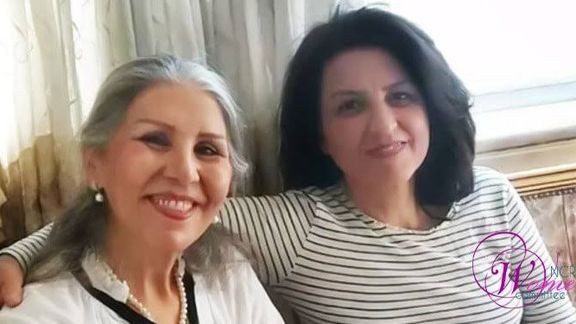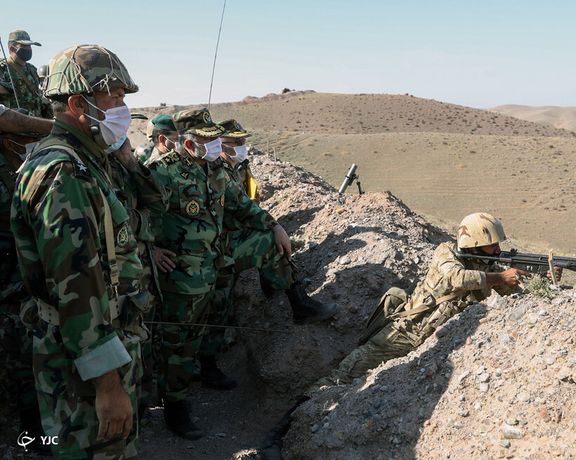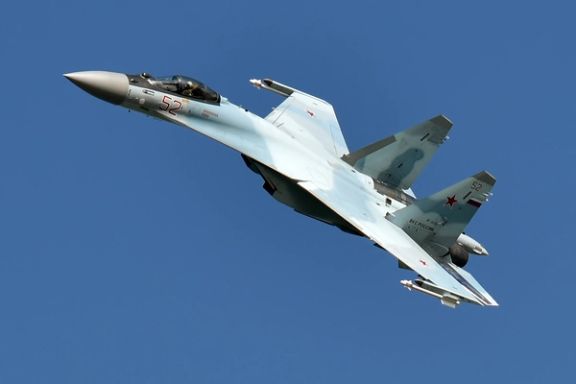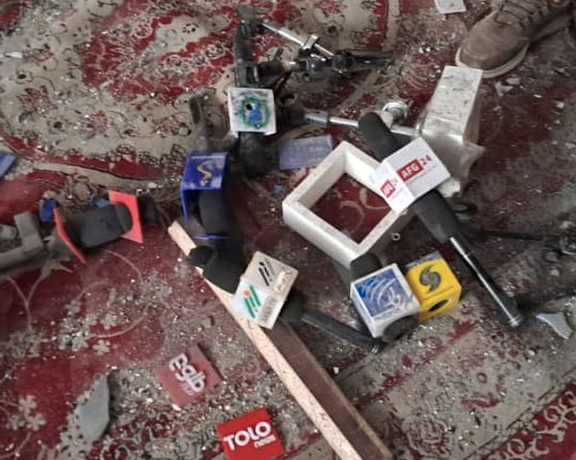Civil Activists Condemn Prolonged Detention Of Two Baha’i Women

A group of Iranian civil activists issued a statement protesting "heavy and unfair" sentences against two well-known Baha'i figures.

A group of Iranian civil activists issued a statement protesting "heavy and unfair" sentences against two well-known Baha'i figures.
Bahai community leaders Fariba Kamalabadi, 60, and Mahvash Sabet Shahriari, 70, were handed new 10-year sentences in December after having served 10 years previously on charges of threatening national security.
”The two women have spent many days of their lives in prisons for being Baha'i. No one should be harassed or persecuted just because of their beliefs and religion," reads a statement signed by journalists, lawyers, former political prisoners and activists inside and outside Iran.
The group said the accusations against the women are “baseless”, the ‘trial’ conducted in November lasting just one hour. At the time, the Baha'i International Community said it was "an unbelievable injustice”.
It is four years since the two ladies were released from their first decade-long sentence, and activists including Shirin Ebadi and Atena Daemi, say the two are being persecuted on “unfounded charges".
The Shia clergy consider the Baha’i faith as a heretical sect. The Baha'i community, who number around 300,000 in Iran, are systematically prosecuted, discriminated against, and harassed. They cannot hold jobs in the public sector and are sometimes sacked from their jobs in the private sector under pressure from authorities.
In September, the BIC reported 245 incidents of persecution over 32 days, with arrests and imprisonment, the destruction of homes and confiscation of properties, raids on private and business premises, beatings, the denial of medication to detainees and the denial of higher education to more than one hundred young people.
Human rights defenders and international institutions always consider the behavior of the Islamic Republic of Iran in dealing with Baha’i citizens as a "systematic violation of human rights".

Iran's interior ministry announced Saturday the arrest of over 100 people in eleven provinces in connection with poisoning attacks on dozens of girls’ schools.
The attacks that started three months ago have continued without any apparent effort by the government to seriously pursue the perpetrators or explain to terrified parents and students what was happening in so many schools.
In its statement, the ministry attributed some of the poisoning attacks to “pranks” by students using “foul smelling and harmless substances” in an attempt to get their classes dismissed.
“Among the detainees there are individuals with hostile motivations,” the statement said, adding that these individuals meant to cause fear and panic among the people to shut down schools and cast the blame on the regime.
“These individuals are under investigation to reveal their possible connection with terrorist organizations such as the monafeghin,” the statement said. Iranian authorities always refer to the Mujahedin-e Khalq Organization (MEK) as monafeghin (hypocrites).

The statement reveals very little about the arrests but two days earlier the local channel of the state television in Fars province aired the so-called ‘confessions’ of a man and his daughter arrested and accused of attacking schools with N2 gas canisters. The statement provided no names for those arrested or any other information.
Many ordinary Iranians have been suspicious of involvement of the regime itself, or religious extremists protected by the regime, in the school attacks and call the acts “state terrorism”.
“There is strong suspicion that the purpose of the attacks is quashing the Woman, Life, Freedom movement by instilling fear among girls and their families,” an umbrella teachers' association said while calling the attacks “bioterrorism” and demanding Supreme Leader Ali Khamenei and other top religious figures to condemn the attacks expressly and decisively.
Diaspora Iranian held protests Saturday in 70 cities around the world to demand action to stop the school attacks.

The ministry said in its statement that there is a “considerable drop” in school poisoning attacks although seven more schools were affected on Saturday and tens of students had to be taken to hospital.
Attacks were reported in southwestern Khuzestan province where four schools were targeted. Tens of poisoned students had to be taken to hospitals also in southern Fars, western Kordestan and in northern Gilan provinces.
In a report Saturday, the judiciary claimed that “less than ten percent” of students reported poisoned so far had inhaled “an irritant gas which is not of weapons grade or deadly” and the remaining ninety percent were only affected by stress and other psychological factors.
In an article entitled “Casting Light On Psychological Operations Of Criminals In Student Poisoning Incidents” on Tuesday, the hardliner Mashregh news website accused a banned teachers’ association of using the attacks to wage psychological war against the Islamic Republic to revitalize the protest movement.
The article claimed that it was the MEK that described the school poisonings as ‘chemical attacks’ for the first time and alleged a connection between MEK and union activists who also referred to the incidents as chemical attacks on schools.
Earlier this month, the association urged its members and others to stage protests to demand urgent resolution to school attacks as well as teacher’s own problems including a wage increase for the next year that takes the factor of inflation into account.
In response to the association’s call, teachers and parents held rallies in dozens of cities and chanted slogans such as "death to the child-killing regime".
“Think-tanks of security and intelligence bodies are projecting their own responsibility over the poisoning of students and building new legal cases against union and civil activist,” Mohammad Habibi, spokesman of the Iran Teachers’ Trade Association, said in an Instagram post Saturday.
Habibi vowed that teachers would continue to defend “our children and their achievements [in the protest movement].” “Our message to them is clear: we will not withdraw [against pressures by the security forces].”

Foreign Ministry of Azerbaijan summoned the Iranian ambassador in Baku Saturday to protest the flight of an Iranian warplane on the border of the two countries.
Ambassador Abbas Mousavi was called to the foreign ministry and told that Saturday morning local time a warplane continuously flew near the Azerbaijani border for more than 40 minutes at a distance of 3-5 kilometers.
Azerbaijan called the incident “provocative and unfriendly.”
A statement issued by Baku said that the Islamic Republic also held “large-scale military drills last year along the Aras river near the borders of Azerbaijan.”
An attack by a gunman on Azerbaijani embassy in Tehran in January that killed the missions security chief led to heightened tension between the two countries.
Relations have been tense since 2020 when Azerbaijan defeated Armenia in a war and recaptured territory occupied by Armenian forces since the early 1990s. It then took further military action in 2022 trying to occupy territory in Armenia proper, threatening to cut off Iran’s link with its northern neighbor. Iran has repeatedly warned Baku not to attempt to change international borders.
Tehran also accuses Baku of harboring Israeli intelligence and military elements that plan to use its territory in a possible attack against Iran’s nuclear installations.
However, Azerbaijan's ambassador-designate to Israel Mukhtar Mammadov said recently that his country would not allow Israel’s military to use its territory as a base for a possible attack against Iran.
Mammadov also rejected reports that Azerbaijan would allow the Mossad to set up a branch in Azerbaijan to monitor what is happening in Iran.

Iran has reached a deal to buy advanced Su-35 fighter planes from Russia, Iranian state media says, expanding its controversial military ties with Moscow.
"The Sukhoi-35 fighter planes are technically acceptable to Iran and Iran has finalized a contract for their purchase," the broadcaster IRIB quoted Iran's mission to the United Nations as saying in New York.
The report did not carry any Russian confirmation of the deal, details of which were not disclosed. The mission said Iran had also inquired about buying military aircraft from several other, unnamed countries, IRIB reported.
Russian President Vladimir Putin met Iranian Supreme Leader Ayatollah Ali Khamenei in Tehran last July, stressing closer ties in the face of Western pressure over the war in Ukraine.
Iran has has supplied hundreds of kamikaze drones to Russia that have been used to target Ukraine's military and civilian infrastructure. Moscow denies that its forces use Iranian-built drones in Ukraine, although many have been shot down and recovered there.
Iran’s air force has only a few dozen strike aircraft: Russian jets as well as ageing US models acquired before the Iranian revolution of 1979. Instead, Iran has developed a variety of drones and missiles see n as a threat for other regional countries.
In 2018, Iran said it had started production of the locally designed Kowsar fighter for use in its air force. Some military experts believe the jet is a carbon copy of an F-5 first produced in the United States in the 1960s.
With reporting by Reuters

A bomb explosion in a cultural center affiliated with the Islamic Republic in Afghanistan has left at least four people dead and several others injured.
Abdul Nafi Takor, the spokesman of the Taliban's Ministry of Interior said Saturday that the bomb was planted in the "Tebyan" center supported by the Islamic Republic of Iran in the northern city of Mazar-i-Sharif.
German news media say a member of security forces was killed and eight people, including five journalists and three children are among the wounded.
Meanwhile, Radio Azadi, the Afghan Service of Radio Free Europe, quoted local sources as saying that the explosion left four people dead and 16 wounded.
According to reports, provincial journalists were supposed to be receive awards in Tebyan Cultural Center on Saturday.
A large number of media activists and religious figures were also present in this ceremony.
The bombing in the Shia center on Saturday came two days after ISIS claimed a suicide attack on the office of the Taliban governor in Balkh province that killed the governor of Mazar-i-Sharif Mohammad Dawood Muzammil.
The Tebyan Center is one of the cultural centers supported by the Islamic Republic that one of its branches was attacked by the Islamic State group in Kabul in 2017.
Iran developed religious and other foundations in Afghanistan to build influence during the US presence in the country. Its relations with the Taliban are a mixture of cooperation and tensions.

A high-ranking seminarian in Qom, Iran's most religious city says there is a strange tendency among members of the Bakhtiari tribe to convert to Zoroastrianism.
Speaking in an interview with Didban Iran [Iran Monitor] website, Ayatollah Seyyed Mohammad-Javad Alavi-Boroujerdi who teaches jurisprudence and principles of Shiism at the Qom Seminary, added that there are home-based churches in Qom for Muslims who have converted to Christianity.
Converting to another religion is forbidden in Islam and Iran's government does not allow or recognize conversion.
Presenting further evidence about Iranian youths abandoning Shiism, Boroujerdi said that some people in Qom are converting to Budhism. "The number of Wahabi Muslims in Iran is also on the rise. They have increased their activities and have their own Friday Prayer congregations," Said Boroujerdi.
He criticized Iranian hardliners for violent methods to make people stick to strict Shiite religious rules and said we cannot divide people into insiders and outsiders and then tell the outsiders to leave the country.
Boroujerdi warned that "some Iranians including the Bakhtiaris are separating from us, and that is a problem." He added: "These are the people who used to be with us. Let us be friends with the people and maintain our communication with them," he advised regime officials.
"I feel responsible for the youngsters who have left us and became Christian. He is a Shite boy and I must bring him back into the fold. I cannot let him go."

The scholar added that the 12th Imam of the Shiites went into the occult because a divide occurred among the people after the 11th Imam's death and the people at the time did not embrace the 12th Imam's leadership." Meanwhile, he stressed that "people including state officials who promise the hidden Imam's imminent return are liars. He will emerge only when Allah wants him to emerge from the occult."
Boroujerdi regretted that young clerics who start their career at the seminary in all honesty and modesty, gradually do away with these traits and may only try to return to them when they are too old. He asked: "What have we done to young Shiites who fought a war for us and are still enduring the sanctions?"
Other clerics and commentators have also said that Iranian youth have turned their back to Shiism. Conservative website Alef in Iran wrote last April that "the presence of religion as part of the government has led to a decline in religious beliefs."
The website added, "the experience of the Islamic Republic in Iran showed that political religion, i.e., clerics’ presence in political positions and in the government has led to a decline in the people's religious beliefs."
The report further added that Iranians were more religious under the Shah than in the Islamic Republic where clerics are holding political power. Iranian clerics' social status declined further during more than five months of street protests against the government, as people came out to demand a secular government with no clerics in key positions.
Reports on the Qom Seminary's own website indicate that clerics and government officials knew since more than ten years ago that Iranian youths have turned their backs to religion.
Meanwhile, media reports indicate that even Supreme Leader Ali Khamenei knows that Iranians demand a secular government and that the youths are turning away from his religious government.
Nonetheless, some clerics and Muslim scholars maintain that young Iranians are only weary of the version of religion that treats them in a dogmatic and unilateral way. They are fed up with the paradoxes that we feed them. otherwise, they are not against the essence of religion."